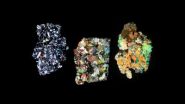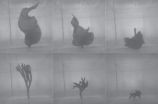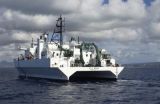New report illustrates impact of sequestration to medical research
2012-05-11
(Press-News.org) The report "Sequestration: Health Research at the Breaking Point," released today by Research!America, demonstrates the damaging consequences of potential automatic spending cuts, or sequestration, to the nation's medical research enterprise and public health, and offers examples on how these cuts would delay scientific discoveries that could lead to new treatments and cures for deadly diseases.
This report provides:
The estimated budget cuts to the National Institutes of Health, the Centers for Disease Control and Prevention, the Agency for Healthcare Research and Quality, the Food and Drug Administration, and the National Science Foundation;
Statements and testimonials from the leaders of these federal health agencies, as well as the patient community, academia and industry;
Compelling budget comparisons to help illustrate the magnitude of these cuts;
Charts illustrating the impact on NIH and NSF grants to research institutions, academic medical centers and small businesses throughout the country;
Charts depicting the inevitable fiscal consequences of delaying research aimed at combating disabling and deadly diseases.
"We can't afford to hamstring our nation's research enterprise at the expense of new businesses, new jobs, and most importantly, new medical advances that save American lives," said Research!America president and CEO Mary Woolley. "Research and development is the backbone of a healthier, more productive nation and a stronger, more globally competitive economy. Across-the-board cuts would severely impede medical progress and economic growth."
INFORMATION:
To view the report, visit: http://www.researchamerica.org/sequestrationreport
END
ELSE PRESS RELEASES FROM THIS DATE:
2012-05-11
TEMPE, Ariz. – New findings from NASA's Dawn spacecraft lay the groundwork for the first geological overview of asteroid (4)Vesta and confirm the existence of not one but two giant impact basins in its southern hemisphere. The findings, published today in a set of Science papers, will help scientists better understand the early solar system and processes that occurred as it formed and evolved.
The Dawn spacecraft, orbiting asteroid Vesta since July 2011, has already acquired several thousand images of the asteroid's surface, revealing a complex landscape. The images ...
2012-05-11
MAYWOOD, Ill. – Patients see potential benefits from direct-to-consumer genetic testing, but are also concerned about how test results will be used, and generally are unwilling to pay more than $10 or $20 for them, according to focus groups conducted by researchers at Loyola University Chicago Stritch School of Medicine.
Findings by first author Katherine Wasson, PhD, MPH, and colleagues are published in the American Journal of Bioethics Primary Research. Wasson, an assistant professor in Loyola's Neiswanger Institute for Bioethics and Health Policy, is an expert on the ...
2012-05-11
Seaweeds are important foundational species that are vital both as food and habitat to many aquatic and terrestrial shore organisms. Yet seaweeds that cling to rocky shores are continually at risk of being broken or dislodged from their holds by crashing waves with large hydrodynamic forces. So how do such seaweeds survive in intertidal zones? Do they have special properties that make them extremely flexible or particularly strong?
Patrick Martone (University of British Columbia) has spent a considerable amount of time standing on the shore watching big waves crash ...
2012-05-11
When UCLA's Christopher T. Russell looks at the images of the protoplanet Vesta produced by NASA's Dawn mission, he talks about beauty as much as he talks about science.
"Vesta looks like a little planet. It has a beautiful surface, much more varied and diverse than we expected," said Russell, a professor in UCLA's Department of Earth and Space Sciences and the Dawn mission's principal investigator. "We knew Vesta's surface had some variation in color, but we did not expect the diversity that we see or the clarity of the colors and textures, or their distinct boundaries. ...
2012-05-11
PHILADELPHIA — When the Deepwater Horizon drilling rig exploded April 20, 2010, residents feared that their Gulf of Mexico shores would be inundated with oil. And while many wetland habitats and wildlife were oiled during the three-month leak, the environmental damage to coastal Louisiana was less than many expected, in part because much of the crude never made it to the coast.
Research by a trio of geoscientists, including the University of Pennsylvania's Douglas Jerolmack, now offers an explanation for why some of the oil stayed out at sea. Using publicly available ...
2012-05-11
For the last few decades, space scientists have generally accepted that the bubble of gas and magnetic fields generated by the sun – known as the heliosphere – moves through space, creating three distinct boundary layers that culminate in an outermost bow shock. This shock is similar to the sonic boom created ahead of a supersonic jet. Earth itself certainly has one of these bow shocks on the sunward side of its magnetic environment, as do most other planets and many stars. A collection of new data from NASA's Interstellar Boundary Explorer (IBEX), however, now indicate ...
2012-05-11
Forests in the Amazon Basin are expected to be less vulnerable to wildfires this year, according to the first forecast from a new fire severity model developed by university and NASA researchers.
Fire season across most of the Amazon rain forest typically begins in May, peaks in September and ends in January. The new model, which forecasts the fire season's severity from three to nine months in advance, calls for an average or below-average fire season this year within 10 regions spanning three countries: Bolivia, Brazil and Peru.
"Tests of the model suggested that ...
2012-05-08
GALVESTON, Texas – April 30, 2012 – The proportion of insured girls and young women completing the human papillomavirus (HPV) vaccine among those who initiated the series has dropped significantly – as much as 63 percent – since the vaccine was approved in 2006, according to new research from the University of Texas Medical Branch (UTMB) in Galveston.
The study, published in the current issue of Cancer, reveals the steepest decline in vaccine completion among girls and young women aged nine to 18 – the age group that derives the greatest benefit from the vaccine, which ...
2012-05-08
VIDEO:
Associate professor Michael Davies (Robinson Institute, University of Adelaide) discusses the findings of a study into the risk of major birth defects associated with assisted reproductive technologies.
Click here for more information.
A University of Adelaide study has identified the risk of major birth defects associated with different types of assisted reproductive technology.
In the most comprehensive study of its kind in the world, researchers from the University's ...
2012-05-08
Commercial ships travel across most of the globe and could provide better warnings for potentially deadly tsunamis, according to a study published May 5 by scientists at the University of Hawaii – Manoa (UHM) and the National Oceanic and Atmospheric Administration's Pacific Tsunami Warning Center.
James Foster, lead author and Assistant Researcher at the UH School of Ocean and Earth Science and Technology (SOEST), and colleagues were able to detect and measure the properties of the tsunami generated by the magnitude 8.8 earthquake in Maule, Chile (February 2010), even ...
LAST 30 PRESS RELEASES:
[Press-News.org] New report illustrates impact of sequestration to medical research




